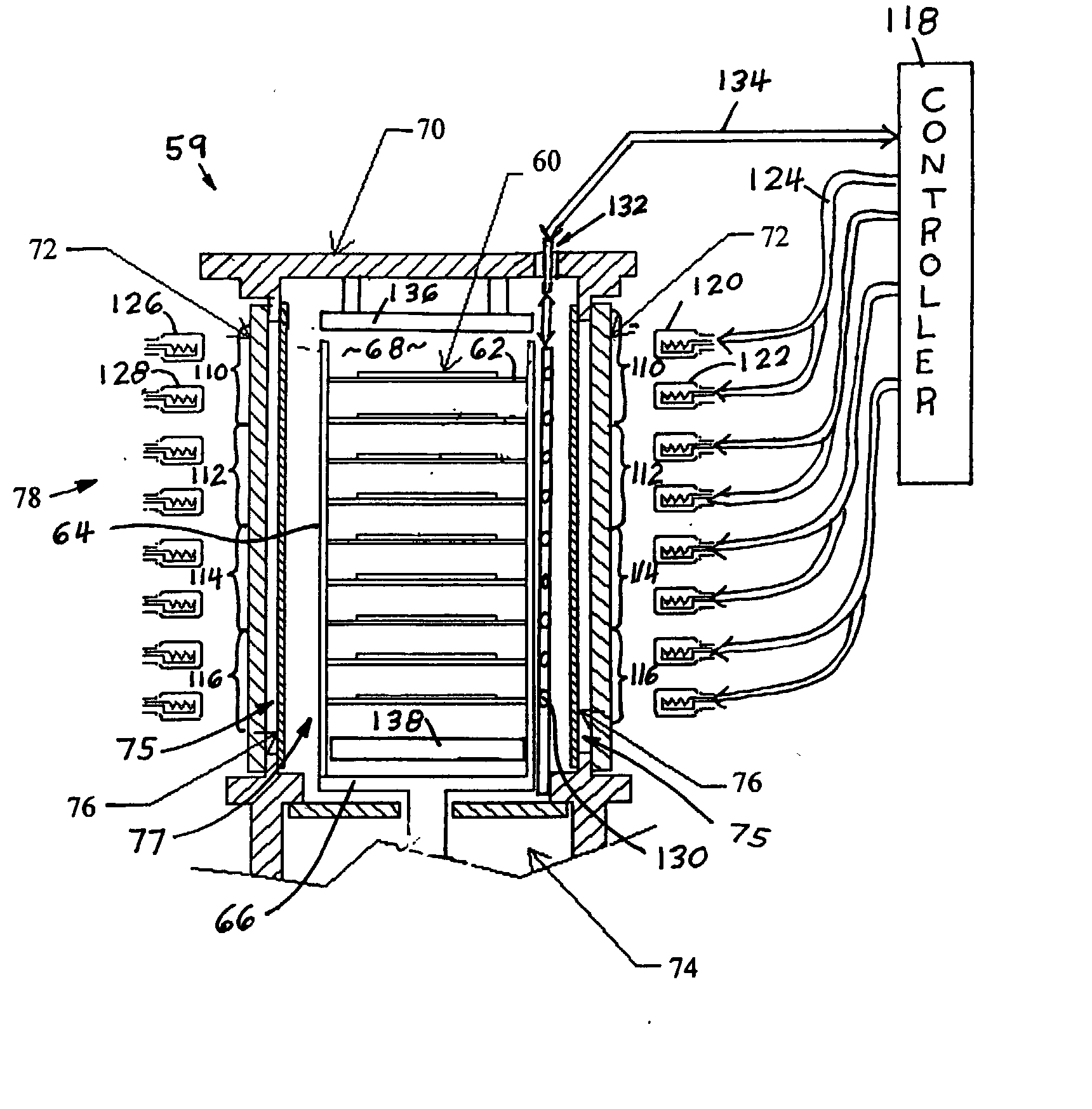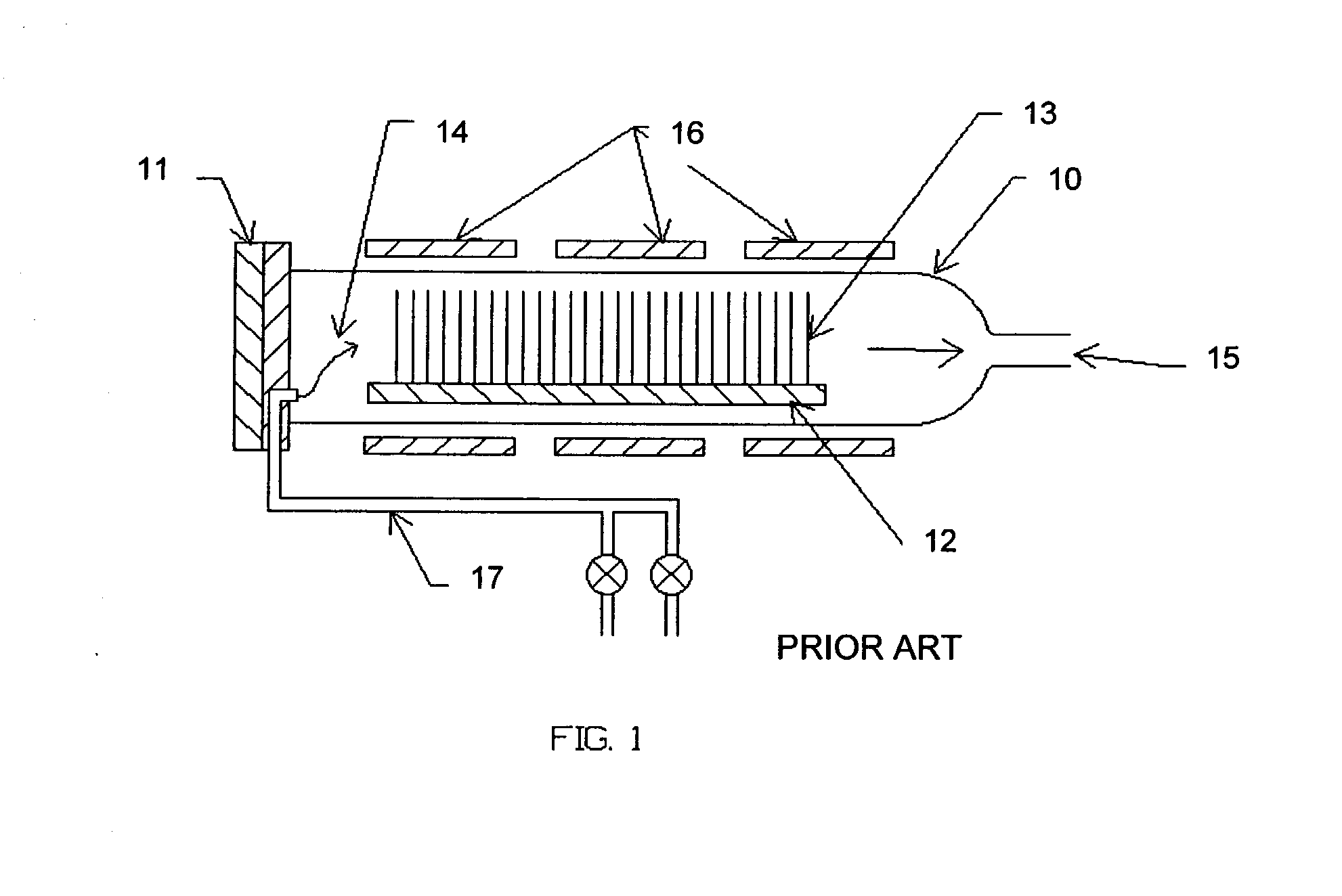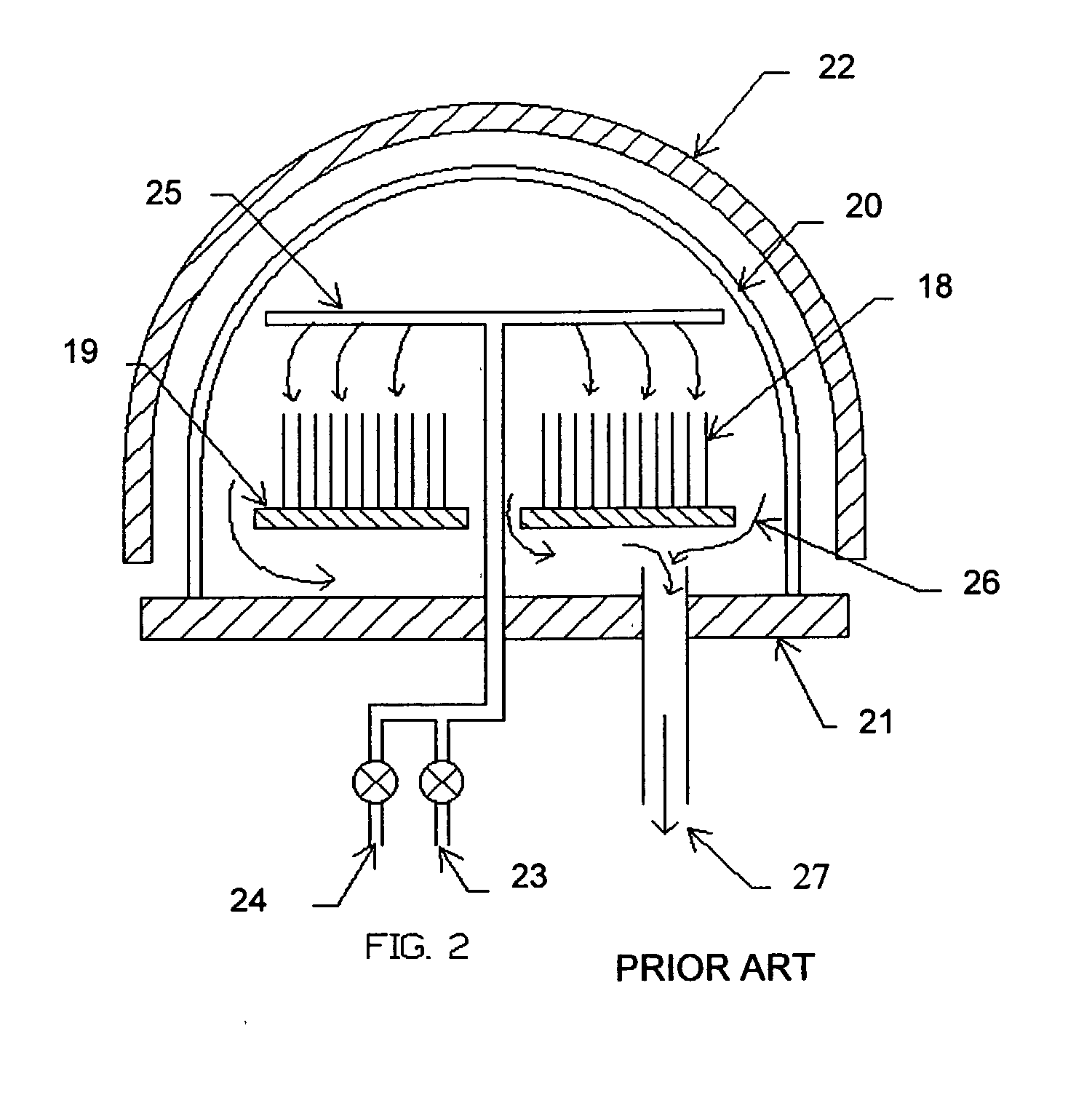High rate deposition at low pressures in a small batch reactor
a high-rate deposition and batch reactor technology, applied in conveyor parts, transportation and packaging, coatings, etc., can solve the problems of large differences in the deposition rate from substrate to substrate, non-uniform deposition across the substrate, and inability to heat by convection, so as to increase the rate of material deposition
- Summary
- Abstract
- Description
- Claims
- Application Information
AI Technical Summary
Benefits of technology
Problems solved by technology
Method used
Image
Examples
Embodiment Construction
[0069] A preferred embodiment of the method of the present invention will now be described in reference to FIG. 4. The term silicon deposition or silicon used in this disclosure is used as a generic term to include polycrystalline silicon, amorphous silicon, and epitaxial silicon, with or without doping. Other materials deposited by CVD are also included in the present invention, such as silicon nitride, silicon oxides, tungsten, tungsten silicide, high-k dielectrics and other materials in which the deposition rate is enhanced by across the wafer gas flow.
[0070] In the particular case of the deposition of polycrystalline silicon, the process begins by placing a plurality of wafers on a multi-wafer carrier / boat 48. The boat with the wafers is placed in the process chamber 50 and rotated 52 and heated 54, with the wafers being heated as uniformly as possible. The preferred temperature range for silicon deposition is 500.degree. C.-900.degree. C. with a most preferred range of 600.degr...
PUM
| Property | Measurement | Unit |
|---|---|---|
| speed | aaaaa | aaaaa |
| gas pressure | aaaaa | aaaaa |
| pressure | aaaaa | aaaaa |
Abstract
Description
Claims
Application Information
 Login to View More
Login to View More - R&D
- Intellectual Property
- Life Sciences
- Materials
- Tech Scout
- Unparalleled Data Quality
- Higher Quality Content
- 60% Fewer Hallucinations
Browse by: Latest US Patents, China's latest patents, Technical Efficacy Thesaurus, Application Domain, Technology Topic, Popular Technical Reports.
© 2025 PatSnap. All rights reserved.Legal|Privacy policy|Modern Slavery Act Transparency Statement|Sitemap|About US| Contact US: help@patsnap.com



